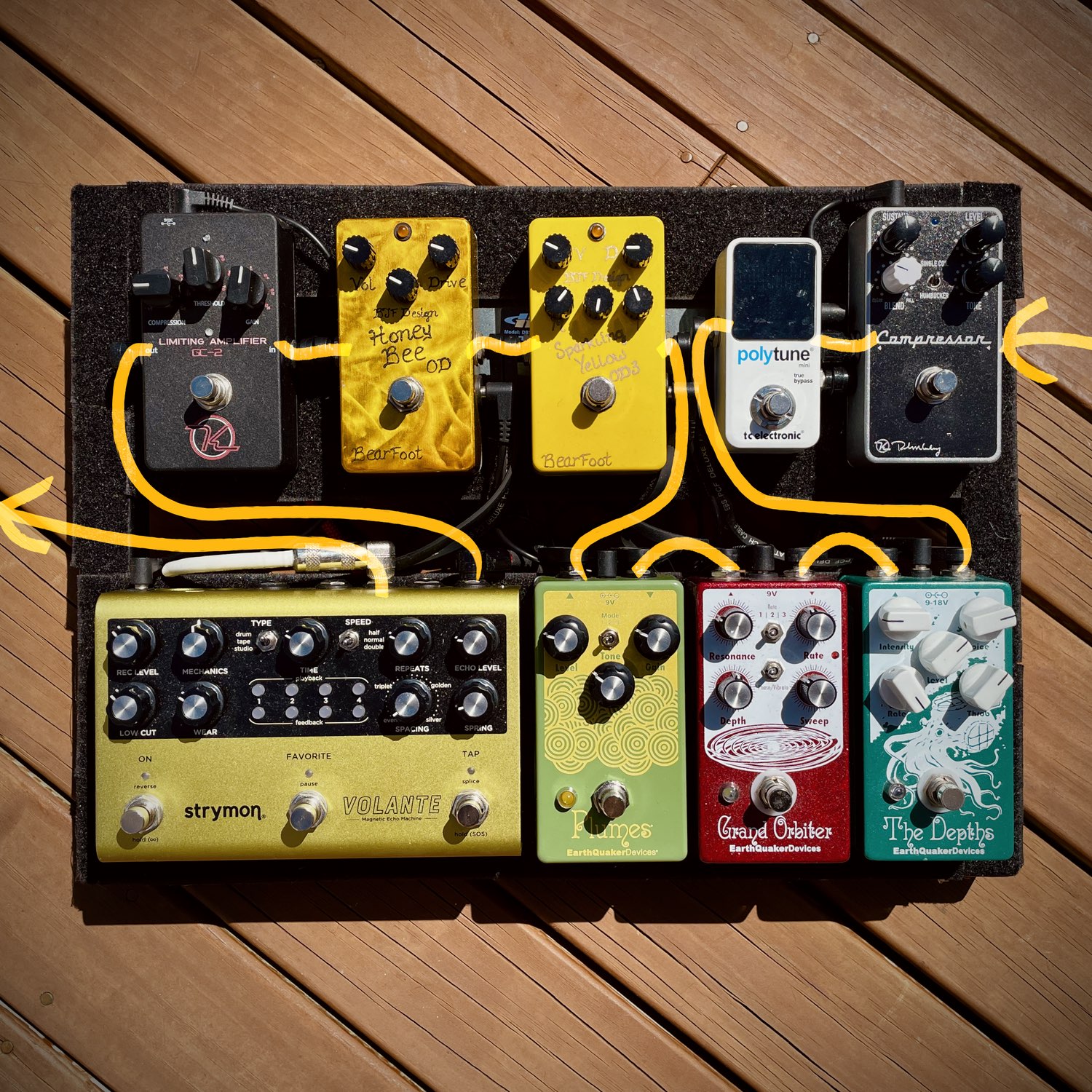Pedalboard update for DI recording
With the pandemic, my primary focus for my music hobby has shifted to recording, and with it I’ve been exploring synthesis and electronic music more than guitar. As a result I switched from using Apple’s Logic Pro X to Bitwig Studio for recording projects a couple of months ago.
For the times when I do record guitar, I use two methods: either via a small diaphragm condenser mic that is always set up on my speaker cab (for when I can afford to make some noise), or via DI (when amp noise would be disruptive for my family). With the mic both DAWs have essentially the same workflow, but with the DI things get a bit different.
Logic ships with a decent array of amp and cabinet simulations that makes it trivial to DI an electric guitar and go with no easy alternative in Bitwig. As a result I’ve found myself approaching DI differently in Bitwig, as I’m relying on my pedalboard to replace the amp / amp simulation. I’ve reorganised my board to fit better with this workflow:

The back row essentially acts as the “amp voice”: I set up a basic sound using the compressors and one of the two Bearfoot overdrives, both of which are (sigh) amp-like pedals. Both compressors are set very subtle, just enough to get a slightly more forgiving feel when used without a real amp and speaker.
The front row are effects that get turned on and off for specific parts. The Plumes is a new addition that replaced my Mojo Hand FX Zephyr fuzz. It’s set relatively subtly and I mostly use it as a lead boost into one of the Bearfoot pedals. The volante has a spring reverb sim that is fine, but I mostly prefer not to use a spring reverb sound, and instead rely on in DAW reverb.
I’ve been pleasantly surprised by the results. It doesn’t sound like a guitar and amp, but it also doesn’t sound bad. The one thing I’d like to use to improve it is impulse response based reverb; currently Bitwig does not offer anything like that, and I don’t (yet) have a VST to compensate.